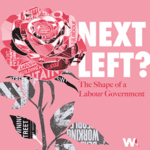
Political Update with Steve Richards – an unexpected Election
This week I had the pleasure of sitting down with Steve Richards, WA Senior Advisor, on a webinar with over 150 corporate communications and public affairs professionals to discuss the General Election. It is fair to say there were only few people on the call who anticipated we would be going to the polls on 4th July!
Steve’s analysis on why Rishi Sunak called the election now is based on two key factors: a calculation that the Government’s fiscal and political position is as strong as it is going to be at any point from now until the end of 2024; and the realisation from the Prime Minister that holding the Conservative party together until November, as it is impacted by ‘events’, might not be sustainable. However, Steve confirmed that from his private conversations with Conservative MPs many are unhappy with the decision to go early, and not as expected in the autumn, when the UK’s economic picture might have improved.
A large part of our discussion focused on the different campaigning strategies of the Labour and Conservative parties, which are already clear to see.
With a sizeable lead coming into the campaign (many polls still have Labour leading the Conservatives by over 20%), Keir Starmer and his chief lieutenant Shadow Chancellor, Rachel Reeves have adopted a ‘big tent approach’ in an attempt to appeal to a broad range of voters right across the country. This is also reflected by the cautious nature of Labour’s policy approach, and particularly its attempts to not be out-flanked by the Conservatives on tax.
In contrast the Conservatives, whose vote is being squeezed by Labour and the Liberal Democrats, but most dangerously by Reform, who are committed to running candidates in every constituency, have adopted a ‘core vote strategy’. This is focused on older voters, and hence why we have seen eye-catching polices announced on mandatory national service and a commitment to never tax the state pension, dubbed the ‘quadruple lock’.
As with all General Elections we can expect this campaign to be fast, dynamic and exhausting, and full of gotcha media moments, and big policy interventions.
Therefore, from a professional perspective for in-house practitioners and consultants advising C-suite audiences, Steve has four pieces of advice:
- Forensically analyse any Conservative policy to properly understand why it has been made. It is likely that it is linked to their core vote strategy.
- Track through Labour policy to see how it could be implemented if they form the next Government, so you are on the front foot. A lot of this detail still needs to be worked out, but you can expect an ‘interventionist’ or ‘active’ state if Keir Starmer becomes the next Prime Minister (see FT leaked memo on Labour’s issues list for a sense of inbound priorities).
- Think about how your business or organisation can support a Labour Government with its first mission, focused on economic growth and the creation of good jobs across the UK.
- Watch out for campaign “cock-ups”, which will inevitably happen. Analyse the reaction to see if it is just commentary or hysteria, or a genuine moment that moves the dial (see Theresa May’s 2107 general election social care policy announcement as a case study).
I would also add one thing that communications professionals should consider in their advice. It is easy to get swept up in the current of political thinking, and in this General Election that narrative is that Labour will win a landslide. The polls might well be correct, but equally the General Elections of 2015 and 2019, and the EU Referendum of 2016, show polling is not always right, or at least the interpretation of polling, and the subsequent perceived narratives might not be.
So it is important to do proper scenario planning early in this campaign on General Election outcomes. For example, a Labour government with a big majority will be a very different beast to one that has a 30-40 seat majority.
This is something we explored in detail, in recent bespoke WA research with YouGov, as part of our ‘Next Left?’ guide to The Shape of a Labour Government. Our research identifies the constituencies behind four potential scenarios in which Labour takes power, looking at the types of voters that would switch to the party, and the backbench issues and priorities that might feed into Keir Starmer’s decision making based on those different scenarios.
From regaining the Red Wall and a hung parliament; to a majority that is more secure but driven by an electorate far more cautious about government spending and intervention, there are many potential outcomes.
And here I bring you back to the 4th July being an unexpected election!
NEXT LEFT? THE SHAPE OF A LABOUR GOVERNMENT
This article is part of our Next Left series, which examines the people and policies that will shape the next government if Labour wins power – explore the guide in full here.
